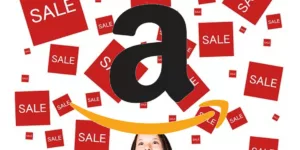Are you lowering your prices on Amazon when your sales are down?
Are you raising prices when sales are high?
If only Amazon repricing was that simple.
If you use Amazon’s platform, you are in a diverse marketplace where the market owner presses a button and shuffles your stall in and out of prime locations according to a secret formula. Amazon uses an algorithm based on much more than simple pricing information, so cutting your prices to regain prime space on the website could just cut your margins without improving your position on Amazon’s marketplace. You need to have everything else in place before starting a repricing campaign.
Pros and Cons of Price Cuts
When you reduce your prices, you are more likely to sell more. However, your profit on each sale is lower, and there is only so much you can reduce the price by before the sale delivers no profit.
Amazon’s customer value algorithm is all about value, so price plays a large part, but there are limits to how low any business can go. You do not want to get caught up in a race to the bottom.
You might need to reduce your asking prices to break into the market, but you should use this as a strategy to get more reviews. Reviewers need to be ecstatic about the goods they receive, so never drop your standards to reduce your price.
Pros and Cons of Price Rises
When you raise your prices, your sales go down. But you make more profit on each sale.
Customers rarely choose the cheapest option without considering other factors: Amazon Reviews
Amazon’s review system is one reason many shoppers search the company’s site for their needs. In the latest iteration of its feedback algorithm, Amazon attaches more importance to recent reviews and to ones customers have found helpful. This means your company can recover from mistakes made years ago by ensuring that all new feedback is highly positive.
Amazon’s Choice Flag
Sometimes Amazon marks one product as ‘Amazon’s Choice’ as shown below.

Competition for this recommendation is fierce because it is the only way to stand out on a page of competing sellers.
Stock levels are one factor how well you rank when someone searches for the product on Amazon. Customer reviews are an Amazon search option, so you need them to be positive, and you need as many of them as possible.
Branding trumps all in the wider marketplace, but your opportunities for branding on Amazon are minimal. Your only branding tool is your product description and photos, so you need to be constantly testing these to find the best conversion rate.
Your Repricing Strategy
Manual repricing can take every minute of your day, and there will still be human biases that reduce your bottom line.
If you are in repricing battles with competing sellers who are using repricing software, you will most likely lose money.
To keep the Amazon playing field level, you must give yourself the same advantages as the other teams. To keep on battling to beat the automatic repricing software your competitors use is a quick way to go bust.
Automatic repricing is the best answer to maximising profits from your Amazon sales.
Amazon repricing software such that Feedvisor offers makes all your repricing decisions for you once you have set up your repricing strategies.

Feedvisor considers many more factors than any human could, and is constantly learning and re-evaluating its pricing decisions. The program calculates price elasticity for each product in your range, alongside your stock levels and your competitors’ stock levels, as well as other market conditions such as demand and what decisions other sellers are taking.
How to Benefit from the Amazon Shuffle
One of Amazon’s prime concerns is customer satisfaction, so you must make your customers happy. Offer free postage whenever you can, respond to customer questions and most importantly, address issues that reviewers raise.
Reviews are one of the biggest attractions for Amazon customers, and 1-star reviews are death to your business. Check the proportion of 1-star and 2-star reviews in your niche. You are always going to get some unhappy buyers, so aim to have a lower percentage of poor reviews than your competitors. Reach out to anyone who returns your products, apologize, explain, and do whatever it takes to make them happy. You should consider the cost of offering a free upgrade as a marketing cost.
On Amazon the customer is king, and if you fail to make the king happy you will be shuffled to the nether regions of the page, and your sales will plummet.
If your customers are happy and Amazon sees you as offering the best value, you are more likely to be awarded the coveted ‘Amazon’s Choice’ flag.








